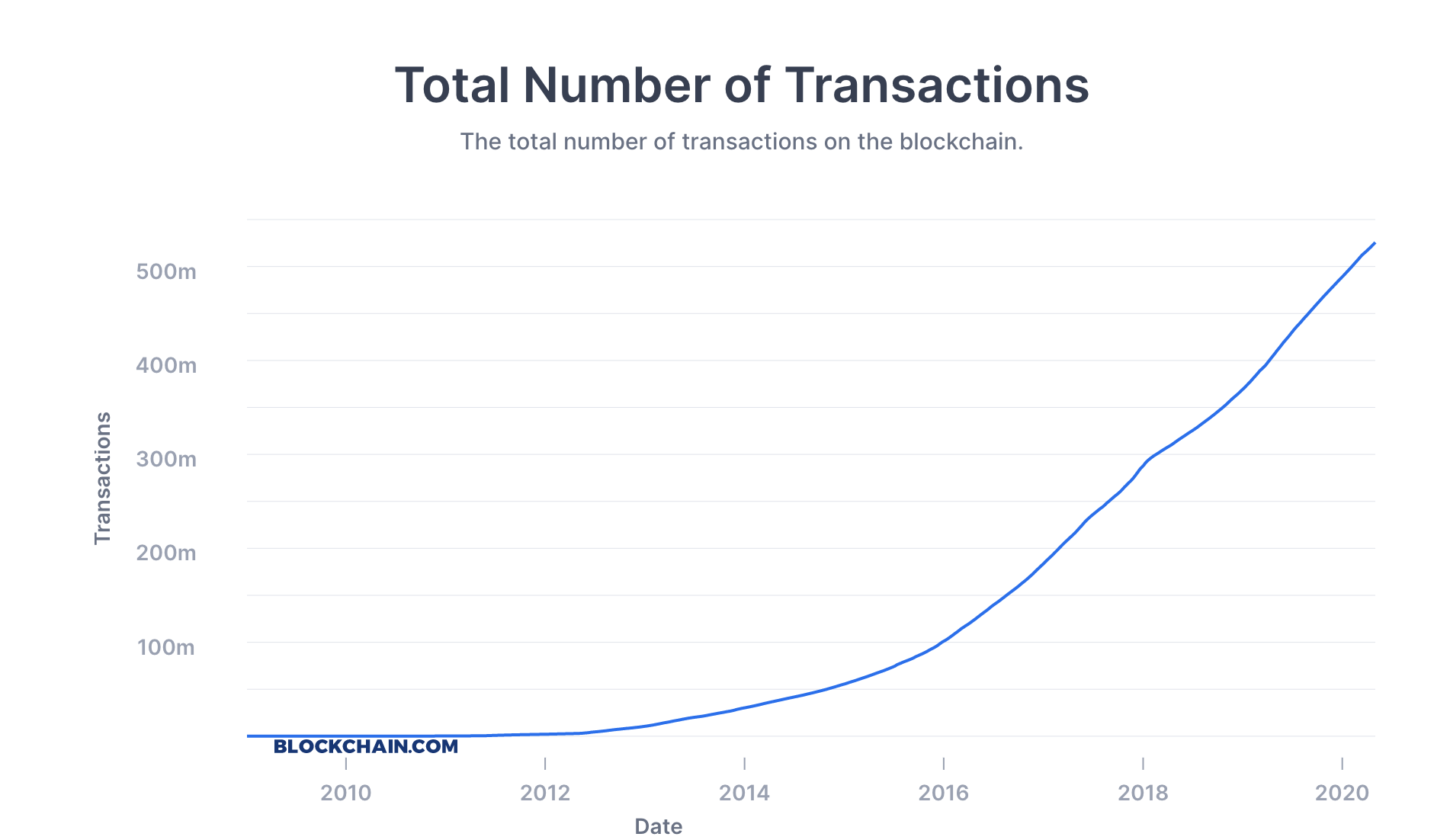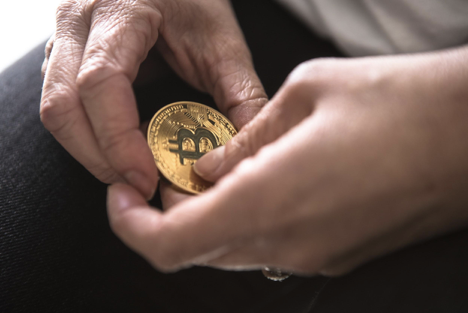
HolyTransaction adds support for Bitcoin Lightning Network

Today, we are pleased to announce that HolyTransaction is adding support for swapping to Bitcoin on Lightning Network and thus introducing the ability to deposit and withdraw using Lightning Network.
By adding this capability, HolyTransaction is set to revolutionise the speed, cost and security of depositing and withdrawing Bitcoin on to its platform.
Lightning Network is a software stack which sits on top of the Bitcoin blockchain and, as the name implies, ensures faster and cheaper transactions for its users.
Other than super fast speed and lower fees users will notice a new format of address called invoice when they send or receive Bitcoin via the Lightning Network. The team at HolyTransaction reported that the integration has been successful and hassle free.
Lightning Network brings three essential product benefits to the HolyTransaction exchange:
• Instant Payments. With the use of smart contracts security across the network is much higher and because the stack is built ‘on top’ of the Bitcoin network no transaction confirmations are required. This makes instant payments super fast, super secure and, of course, super cheap.
• Scalability. The massive upscale in transactions per second eclipses any traditional legacy payment rail on the market today. Furthermore, payment ‘with click’ becomes a true reality as the need for financial custodians are eliminated.
• Low Cost. Because Lightning Network does not interact directly with legacy Bitcoin infrastructure itself Lightning Network enables transaction with incredibly low fees. This in turn will stimulate economic growth in new and emerging markets.
In real terms this means Bitcoin deposits and withdrawals on HolyTransaction will be much faster and much cheaper when using Lightning Network.
At the time of press average costs for sending a Bitcoin transaction currently stand at around $2 with confirmation times of around 10 minutes. This clearly has limitations. However, a Lightning Network enabled transaction will cost less than $0.01 and take somewhere in the region of 1-3 seconds.
Adopting Lightning Network will make HolyTransaction more attractive for users who wish to send transactions with added security at much lower cost and super fast speed. HolyTransaction is happy to report that Lightning Network has been integrated for both desktop and mobile application versions.
Lightning Network was envisioned in 2015 and has seen significant growth throughout 2021 which has lead to it being regarded as the most popular layer 2 scaling solution on the market for Bitcoin today. With continued adoption Lightning Network may just help to finally realise the original Bitcoin goal of providing a scalable, fast and cheap financial payments network to the world.
The team at HolyTransaction believe the adoption of the Lightning Network is the logical step in the development of the platform. Lightning Network adoption will enable HolyTransaction to continue to provide a first class crypto trading experience and offer competitive fees with super fast finality times.
Need to open a channel to us?
021744d86987a91958461117cd9e7c0e3160f7b86de11f5998018f4b4984a5c330@54.194.246.117:9735
Lightning Network Node links:
1ML
Amboss
Open your free digital wallet here to store your cryptocurrencies in a safe place.

Cryptocurrency and the Future of Business
Cryptocurrency and the Future of Business
Cryptocurrency users are still a small minority. The total number of users was at 106 million as of January 2021. That sounds like a lot, but when you consider a global population that is nearing 8 billion, you can see that it is just a tiny fraction of people using crypto.
Whether you are in crypto or not, it is going to have an increasing effect on business. You can see Bitcoin mining operations selling shares on stock exchanges, large businesses looking into uses for crypto coins, and more people taking an interest in buying and using cryptocurrency.
At the current trend, crypto coins are becoming more common every year. If it holds, it might not be a matter of if people start using different cryptocurrencies, it could just be a question of when.
Crypto for International Transactions
In the digital age, businesses are now connected internationally like they never before. Beyond the large multinationals, it is increasingly becoming common for smaller businesses to have significant international connections. This is not only true as it concerns deals with other companies, but businesses now have employees or contractors they work with from around the world.
Using cryptocurrency as a medium of exchange for international transactions could solve a lot of problems for these businesses. First, cryptocurrency could ease the burden of having to convert currency for several different countries. Beyond that, it could also make transactions faster, cheaper and more convenient by cutting out the traditional middlemen that would typically be in the middle of these transactions.
Adoption by Mainstream Institutions
One of the factors that have held back many cryptocurrency markets is the lack of support from mainstream institutions. Banks wouldn’t let you make transactions with crypto exchanges, and it was hard to find businesses that would allow you to use your cryptocurrency. This is changing rapidly.
Beyond the ability of investors to use an ultra fast trading app to make trades, we now see a range of big institutional investors buying cryptocurrency. Along with that, some of the world’s largest financial businesses are starting to work with crypto. As an example, PayPal started offering a range of cryptocurrency services earlier this year. You also have major credit card companies that are starting to work with crypto on a limited level.
Crypto as a Real Store of Value
One of the main claims of many crypto skeptics is that the coins have no inherent value. This is true in a sense. The value of most crypto coins is solely based on the perception of people in the market. While that might be true, you could make the same argument for most fiat currencies. The value is based on the fact that people will accept it in exchange for goods and services.
Crypto has an advantage over many fiat currencies: the fact that many crypto coins have a limited supply. As inflation acts on fiat currencies, crypto could grow in popularity as a hedge. In the future, many investors will hold crypto in the way that they hold gold as a protection against inflation.
Tokens as Business Equity
Raising or distributing equity usually means creating conventional shares of the business. While this could be a way to raise money or provide value to employees, it does come with a range of hurdles. One way to get around many of these hurdles would be to create crypto coins that represent shares in the company.
Instead of jumping through all of the regulatory hoops to issue shares, the business could give people crypto coins as equity. Instead of holding an IPO, the business could do an ICO as a way to raise capital from investors.
Crypto for Crowdfunding
With the rise in crowdfunding platforms, the ability to raise money is easier than it ever has been. These platforms not only make it easy to raise money from the public, but they also offer a level of transparency that is popular among those looking to donate or invest. With that said, these platforms often take a significant portion of the funds in fees.
Using a blockchain wallet for crowdfunding could be a way to get the transparency of a crowdfunding platform while avoiding the fees. This would allow those looking to raise funds to do so off a platform, but with the blockchain ledger, potential donors or investors could still see the donations coming in.
Crypto is a field that is always evolving. As businesses see the benefits and new applications become available, it will become more common. With that said, the markets are unpredictable. The only thing that we can be sure of is that there will be ups and downs along the way.
Open your free digital wallet here to store your cryptocurrencies in a safe place.

Liquid Bitcoin Wallet: HolyTransaction adds support for L-BTC – Bitcoin on the Liquid Network!

Today, we are pleased to announce that HolyTransaction Wallet is adding support for swapping L-BTC and thus introducing the ability to deposit and withdraw bitcoin using Liquid Network.
Bitcoin on the Liquid Network, or L-BTC, is verifiably backed 1:1 by bitcoins on the mainchain as Liquid is a federated sidechain between bitcoin exchanges and market makers. Once the coins are transferred from BTC to L-BTC, HolyTransaction users can take advantage of the massive speed and increased security features.
Why is Liquid support such a big deal?
Liquid Network is capable of operating ten times faster than Bitcoin’s own network, which opens up a world of possibilities for the users, particularly when it comes to the speed, faster transactions, and lower costs of making payments. Imagine having to only wait for one minute for your transaction to be processed, as opposed to at least 10 minutes, which is what Bitcoin’s blockchain requires. That is what Liquid Network offers, and what customers of HolyTransaction will now have the ability to do from within their wallet.
Open your free digital wallet here to store your cryptocurrencies in a safe place.

What Early Mining Patterns Tell Us About The Motives Of Bitcoin’s Inventor

The debate about Bitcoin’s inventor, known as Satoshi Nakamoto but otherwise shrouded in mystery, has raged for years. As Bitcoin continues to rise in value, this unknown inventor is presumed to have become a very rich individual indeed. When Satoshi invented Bitcoin, was he driven to profit, mining and hoarding early Bitcoin aiming to accumulate great wealth?
In 2013 first Sergio Demian Lerner presented his research on the early mining patterns Satoshi is presumed to have taken, it revealed around 1 million BTC (now worth around $10bn) hoarded by the creator. For many who see Bitcoin as an anti-establishment currency with an equalizing power, to attribute such vast wealth to Bitcoin’s creator is anathema, undermining the main narrative around Bitcoin and Nakamoto’s original motives. If Nakamoto is as driven by capitalist economics as the nearest banker, is Bitcoin fundamentally different from traditional currencies after all?
Nakamoto’s defenders argued that these 1 million missing Bitcoin were simply forgotten by early miners, and the inventor himself had no such hoard. Indeed, even researching these Bitcoin was taboo. Yet Lerner was unsatisfied with this answer. That’s why he has spent the last seven years unravelling the mining techniques used to unearth these early Bitcoin. What these techniques reveal is that Satoshi (if that is who mined them, Lerner refers to this individual as “Patoshi” to emphasize that we can’t truly know) seems to have been protecting the security of the network rather than pursuing profit after all. The reputation of Bitcoin, and its mysterious inventor, remains intact.
Early Mining Techniques
In order to learn more about the missing Bitcoin – and the individual who mined them – Lerner decided to remine the first 18,000 Bitcoin blocks to see what it revealed. He assumed that these blocks would have been mined with software that was similar, if not identical, to that which came with the first Bitcoin release. This public code was how early miners set about Bitcoins first blocks. The “Patoshi” pattern of how these Bitcoin were mined could ultimately reveal something about the motives of Bitcoin’s inventor, assuming Nakamoto and Patoshi are one and the same.
Through remining these early blocks, Lerner came to a startling discovery. Patoshi’s software was in fact nothing like the software being used by other early Bitcoin miners. Was this Nakamoto giving himself a leg up in the early gold rush of Bitcoin mining? The difference in the mining patterns of the public software and Patoshi’s processes became the keystone of Lerner’s research. Two theories stood out. Firstly, that Patoshi was using an early version of today’s pooled mining processes by combining multiple CPUs. The second theory – seemingly borne out in Lerner’s research – is that Patoshi was multi-threading.
Patoshi’s Multi-Threading
Multi-threading is a hashing technique using intensive computer processing to sweep for multiple nonces (the cryptographic element that Bitcoin miners are searching for) at once, rather than on an individual basis. By rescanning the early blocks, Lerner was able to assess which nonces Patoshi discovered, thus revealing the patterns by which Bitcoin’s inventor was mining blocks. Ultimately, Lerner has demonstrated that Patoshi/Nakamoto was generally finding higher-value nonces thanks to the multi-threading technique, and not because they had superior processing power, but because they had a better process for using their CPU.
Ideology Before Profit
Lerner’s meticulous analysis of the early mining patterns attributed to Bitcoin’s founder reveal that each time Patoshi mined a new block, his miner was turned off for a short interval. If Nakamoto was driven by profit, this is contradictory behaviour as it gives the rest of the community an opportunity to unearth new blocks. Lerner posits that Nakamoto wanted to see fair competition amongst early miners, and distribute Bitcoin equally at the start of the network.
At the same time, Patoshi’s multi-threading would have allowed them to uncover new blocks when they were not being mined by other early users, thus enabling the network to continue ticking over. These patterns have led Lerner to argue forcefully that the security of the network – and not profit – was Nakamoto’s motivation for their early mining patterns.
Still Unknown
It remains an assumption that Patoshi and Nakamoto are one and the same, and the identity of this individual is still unknown. But Lerner’s research strongly indicates that profit was not an early motivator of the Patoshi pattern.
Kristin Herman is a tech enthusiast and a project manager at Essayroo.com and Boomessays.com online writing services. When she takes a break from the screen she likes to curl up with a good book, albeit one about cryptotrends and digital landscapes!
Open your free digital wallet here to store your cryptocurrencies in a safe place.

How Cryptocurrency is Paving the Future for Hedge Funds
We all know how cryptocurrency rose to power and the impact it’s having on the world, but now it’s confirming its place as a form of finance that is used and accepted around the world, it’s time to look to the future, in particular, hedge funds.
Have you ever thought about how cryptocurrencies are effective hedge funds, and how many believe that cryptocurrencies are, in fact, the future of hedge funds? Well, the future is now. Crypto hedge funds are already popping up here and there, and while 150 exist at the time of writing, there are many more on their way.
In fact, many believe that this number could double, if not triple, over the coming year. While it’s clear the venture capital industry is changing as we know it, today we’re going to share what we already know, and what we can expect in the coming years.
It’s Far from Ready
By many estimates, there are over 15,000 hedge funds around the world, 150 cryptocurrency hedge funds don’t seem like a lot. Even if you triple this number to 450, that still such a small percentage of the total hedge funds count, so why is this such a big deal?
The truth is, the industry is still growing and finding its feet, which means once it’s able to stand up for itself, so to speak, then it will really start to take up. At the moment, it’s still in its crawling days.
Rough estimates state that the hedge fund industry is worth around $3 trillion, whereas the amount of money going to cryptocurrencies is only around $3 billion. I know these are still huge sums of money, but on the grand scale of things, it’s tiny. However, this is predicted to change over the next 12 months.
This is because cryptocurrency values and estimates are still way too high, and many cryptocurrencies are way too volatile, which means investors are being cautious around them. Additionally, with so much competition in the industry, it’s hard for investors to know what to focus on, and what investment opportunities are worth the risk.
Many people still see investing in cryptocurrency as gambling, and it’s true, there’s still a huge factor in investing it. However, if the rate of integration of cryptocurrency into the mainstream continues as well as it is already, this shouldn’t continue to be a problem over the next few years.
When you consider that the top 35 cryptocurrencies are valued at over $1 billion, so it’s not going to be ignored any time soon.
Technology is Evolving
Of course, blockchain technology is responsible for making cryptocurrency work in the way it does, but it’s important to note that this technology is still evolving. There’s no denying that the technologies and services are still being invested in, but it’s a long way off being where it needs to be, although this is changing rapidly, and the hedge funds markets are reflecting this.
The more success that comes from the technology, the more it will be developed, and the more funds it will have invested in it, and therefore the faster it will evolve. This will be represented by a rapidly spiking curve over time and will happen fast.
The Tides are Changing
Look at the market, and what do you see? There’s no denying that cryptocurrency is the way that the market is going to go. After all, millennials are already ‘unbanking’ and moving their money in cryptocurrency deposits, rather than traditional banking systems and networks.
Traditional banking systems are noticing this and now, of course, have to consider cryptocurrencies in their banking strategies, and will continue to do so over the coming years. From an investor’s point of view, it’s important to start looking at these strategies and at how cryptocurrencies can be incorporated into their investment strategies.
If you don’t already have a cryptocurrency investment strategy existing, this is something you need to think about because you’re going to be left behind.
Although investors with cryptocurrency strategies are already ahead of the curve, the tides are changing fast, and you don’t want to be left behind and without a strategy when cryptocurrencies play such an integral role in the markets.

Michael Dehoyos is an economic consultant and editor at Coursework Writing Services. He assists companies in their marketing strategy concepts, and contributes to numerous sites and publications, as well as offering investment advice.
Open your free digital wallet here to store your cryptocurrencies in a safe place.

Has The Crypto Market Bottomed After Bitcoin’s 50% Collapse?
The second half of 2019 was really difficult for Bitcoin. According to independent experts, the total volume of public digital assets has decreased by more than 50% – from $388 billion to $166 billion. However, there is other evidence. Yes, the cryptocurrency market really fell to the bottom if you look at these statistics, but let’s not forget that market conditions are dynamic. And the factor that means failure today may well mean success tomorrow.
Another Side of the Coin
There were periods of stabilization of the exchange rate, but for a long time cryptocurrency lost much in price. At one time, panic even started on the market, and Bitcoin was predicted to soon fall to zero. Against this background, the results of the year sounded quite unexpectedly: cryptocurrency turned out to be the most profitable investment. The coin rate rose from $4035 to $ 7344, providing investment growth by 82%.

Crypto Market and Bitcoin in Modern Political and Economic Conditions – What to Expect in 2020?
This year will be great for Bitcoin, Wall Street analyst and Fundstrat founder Tom Lee suggested. The destabilization of relations between Iran and the United States is one of the reasons.
Plus, modern realities make it possible to add a supposedly modern coronavirus epidemic to these factors. However, at the moment there is no consensus among experts on how the coronavirus will affect the Bitcoin exchange rate. It is still unclear whether we are dealing with a real threat to people’s lives or is this another hype, a political company, or an attempt to distract investors from other, more important issues.
However, even those experts who believe that the disease can affect the main digital coin explain that this will happen only if the outbreak develops into a full-fledged epidemic.
Venture capitalist Tim Draper is also confident in the long-term growth in Bitcoin value. In an interview with FOX Business, he advised millennials to invest in cryptocurrencies, as they are on the verge of a new financial revolution. However, the explosion of the financial revolution will slow down due to the influence of the values of older generations and the obsolescence of the current banking system.
Conclusion
Bitcoin exchange rates are very unstable. Cryptocurrencies have already shown that it can rapidly fall and take off at a breakneck pace. Due to this state of affairs, bitcoin does not inspire confidence among many investors who would be happy to invest big money in the development of the blockchain, but fear for their savings. In 2020, we are unlikely to have to observe the strong influence of this factor, but we should not forget about it.
About the author: Gregory is passionate about researching new technologies in both mobile, web and WordPress. Also, he works on Best Writers Online the best writing services reviews. Gregory in love with stories and facts, so Gregory always tries to get the best of both worlds.
Open your free digital wallet here to store your cryptocurrencies in a safe place.

Basic terminology for beginners in regards to Bitcoin trading
For those interested in digital currencies, It has changed the way we do business and the way investors invest in a company. Employers are offering crypto as pay and others, such as music artists, are accepting them in exchange for singles. The attention crypto has attracted made it popular among many. One the biggest reason why many are attracted to crypto is that many of them sit on a decentralised network. This means an organisation or a government does not control them, unlike Fiat currency. Ther is also no physical form of cryptocurrency, but it can be converted into the more familiar notes and coins we know and love.

The introduction of Bitcoin brought with it new technology such a blockchain. The nature of blockchain makes it a secure way of working, and we will go into more detail about it below. It is essential to mention, however, that not all countries share standard consensus o what crypto is. Some view Bitcoin as exchange tokens. Others view crypto in the same light as hard cash. These anomalies in the crypto world mean taxes for Bitcoin differ from country to country which why before investing, purchasing or dealing with crypto, it would be wise to find out the countries views on it.
A big part of making an investment in Bitcoin and other cryptocurrencies and being successful at it means learning the lingo. Here are some of the underlying crypto trading terms that are commonly used. Knowing these terms will help you navigate your way through the world of crypto in ease.
Blockchain
Blockchain is a decentralised and distributed public ledger which means it is a database that is validated by a vast community of people rather than a central authority. In most cases, blockchain refers to the bitcoin blockchain, which is made up of blocks. It allows data to be stored globally on thousands of servers and lets individuals enter the networks to see all the entries in real-time. By doing this, it makes it hard for users to gain control of the system. The immense reach of blockchain makes it harder to hack as all transactions are transparent for all to see. Falsifying a single record in the chain means you would need to forge the entire chain. Bitcoin transactions sit on a blockchain.
Wallet
A wallet is a secure digital wallet that is used to store, send and receive digital currency like bitcoin. It is typically a string of numbers and letters. Many official coins like bitcoin have official wallets, but you can find wallets which hold different types of currencies in one place.
To use a crypto wallet users will usually be given an ID as a way to identify the wallet along with its own private key which will help to authenticate and prove possession of the wallet by the person who owns it.
Private Key
To carry out a transaction with digital currency, you will need two things. The first is a wallet which acts as your address and a private key. The private key is a string of random numbers, but unlike address, the private key must be kept secret. The private key gives users authority to digitally sign and authorise different actions that are done by the digital identity when used with the public key.
The main priority when dealing with cryptocurrencies is to keep the private key secure. It the key gets lost or stolen; there is no means to recover it.
Order Book
The order book displays current prices with volumes in real-time of current order from buyers and sellers.
Bid Price
The price at which a person is trying to sell an asset is known as the Bid Price.
Ask Price
The ask price is the price individuals are trying to buy an asset for.
Bull Market
A period during which asset prices consistently keep rising is known as a Bull Market. To get the most out of investments, users are likely to enter the market at the beginning or just before the start of a Bull market. This is so the assets they buy become more valuable.
Bear Market
In the flip side to the Bull market, a bear market is a period during which the prices of assets consistently fall. The silver lining to this si that the drop in prices means that entering the market becomes cheaper, and it becomes possible to buy the same amount of assets for a lower price. Generally, Bear markets are not specific to cryptocurrencies, and any tradeable asset can go through the same life cycle.
Spread
Spread is referred to as the price difference between the buy price and the sell price of an asset. The exchange between the individuals defines them.
Buy order
When an individual wants to purchase an asset at a designated price, buy order or bids are created. When an individual wants to sell an asset at a selected amount, sell orders, or asks are created.
High and Low
In a 24-hour trading cycle, high means the peak price Bitcoin or other assets have reached in 24 hours. And so low means the lowest price the particular assets has become in the 24-hour trading cycle.
Slippage
The difference between the price a trader expects and the trade to execute at, and the price it eventually executes at known as Slippage.
Execution
The official completion of a trading process is known as Execution.
Cold storage
Storing digital money in an offline wallet is known as cold storage and usually stored on a platform that has no connection to the internet. There are many Blockchain smartphones which now have cold storage capabilities.
Satoshi
Satoshi, named after the creator of Bitcoin, is the smallest unit of Bitcoin (BTC) recorded on the blockchain.
Confirmation
The act of a transaction which is included in a single block within the Bitcoin blockchain is known as confirmation.
Digital signature
Like a fingerprint, a digital signature is an e-signature which is created by using the Publick Key Cryptography (PKC). The digital signature associates securely, a signatory with a document in a recorded transaction. Every transaction has a different digital signature that depends on the users private key.
Transaction Fee
Each Bitcoin transaction incurs a fee. It is processed by a miner who is paid for their services, and the Bitcoin network confirms the results.
Author: Yasmita Kumar
A little bit about me: I am a writer and have been writing about various topics over many years now. I enjoy writing about my hobbies which include technology and its impact on our everyday life. Professionally I write about Technology, Health and Fashion and previously worked for the NHS.
Open your free digital wallet here to store your cryptocurrencies in a safe place.

5 Reasons Why Cryptocurrencies Should Be Taught For Students

Cryptocurrency has been impacting lives, no doubt, and Bitcoin has now become quite popular among the youth and even the adults, making smart investors extremely rich.
Cryptocurrency has been in existence for more than 10 years now. There is hardly a developed country, a civilized geographical location, or an economy of significance around the world still ignorant of the word “cryptocurrency.”
The fact is that even if one does not know what cryptocurrency is all about. Then definitely, you have heard about it from the news, colleagues, neighbors, friends, internet, newspapers, handouts, and souvenirs, and so on.
Bitcoin is taking the lead as the most popular and the most utilized cryptocurrency with billions of dollars of transactions being carried out with it daily. Now, this begs the question, why is cryptocurrency still not taught to students?
Schools are institutions for educating people. Thus, it is of great importance and a matter of necessity that courses or subjects related to cryptocurrency be taught in school systems. This initiative will serve as a means of equipping our young generations for the future to come since cryptocurrency symbolizes a new viewpoint on finance and, primarily, the economy.
In lieu of these, it is worthy of mention that schools should also consider teaching online academic translation services as provided by The Word Point. Nowadays, such skills are essential in virtually all spheres of life.
Why not read on as you discover the five(5) essential reasons why cryptocurrency should be taught to students.
#1 Changes in Valuation Overtime
The knowledge of cryptocurrencies have increased in the general population of the world and have undertaken a new shape over time. According to BitcoinWiki, in 2009, there was no cryptocurrency exchange; the users at that time were majorly cryptography fans who transferred bitcoin mainly as a hobby.
In 2010, a user, known as “Smoke too much,” auctioned 10,000 BTC for $50 without any buyer. Lazlo Hanyecs was also reported to have successfully bought two pizzas at Jacksonville, Florida, on the 22nd of May, 2010. This was the first recorded successful bitcoin transaction. On the 26th of June, 2019, Bitcoin hit $13000, which notable experts attributed to the development of the cryptocurrencies technology industry. This is to enlighten you concerning the history of the significant changes of Bitcoin as a major cryptocurrency. To open your minds to a new life-changing experience, and for you to reason and agree with me as per why cryptocurrency should be taught to students.
#2 Promising Career Opportunities
Taking into consideration, the rate at which cryptocurrency is growing concerning its wide acceptance, thousands of career opportunities are bound to manifest within the years to come.
Concerning a report by Coinbase, it was brought to public knowledge that the population of students from various departments who have become interested in cryptocurrency is growing so fast.
Some companies today are on the lookout for job-seeking graduates who are progressive-minded and are interested in fast-growing technologies. Likely, most of these employers are not well-grounded in the knowledge of cryptocurrency themselves. Hence, they need workers who are capable of bringing this knowledge to an organization.
In the world of crypto, Many opportunities abound, and the possibilities are limitless. Cryptocurrency and digital currency go hand in hand, such that a wide range of opportunities are opened for young scholars. The lists of potential careers for cryptocurrency lovers are virtually enormous.
Here are some few potential career opportunities you should look forward to:
- Cryptocurrency developers and miners
- Cryptocurrency traders
- Cryptocurrency analysts
- Cryptocurrency-based software engineer
- Cryptocurrency developers, and so on.
#3 Encompassing all Industries
According to the SI News blog, Cryptocurrencies have been forecasted to be utilized extensively in industries like Agriculture. Going by this report, it becomes evident that cryptocurrency technology is here to revolutionize the way we run our businesses.
In current times, workers are highly required by employers to collaborate and work across different departments. Several Interdisciplinary research is also growing in popularity in various universities in most developed countries.
For instance, the University of California-Berkeley started delivering a cryptocurrency class called “Blockchain, Crypto economics, and the Future of Technology, Business and Law” which has become quite popular among students.
#4 It is a Great Investment Opportunity
Investment in cryptocurrency is highly encouraged for every business person or investor looking to make it big within a short period. It is indeed an excellent Investment platform given the astronomic rise in bitcoin rate in the year 2007 when it rose to its highest-ever to about $20,000, by which investors made a whole lot of money as a result of their investment.
Even though some investors or individuals will argue that Bitcoin is highly volatile and full of risk, the same principles that apply to businesses and investment opportunities are still applicable to an investment in cryptocurrency.
#5 The Impacts of Cryptocurrency are Enormous
Following the growing trend of cryptocurrency, the impacts are becoming greater and more significant over time. This further stresses the reason why the course should be taught to students. Students need to be prepared for the crypto revolution to come.
Jake Gardner, a crypto analyst once said that “the impact of cryptocurrency is omnipotent considering the huge amount of benefits attached to it”. He also gave some notable advantages of cryptocurrency, which includes:
- It reduces the cost of health-care services.
- It guarantees a secured record-keeping.
- It produces an extensive adoption of cryptocurrency technologies in the next 2-3 years.
- It helps to reduce the cost of operations as well as minimizes the cost incurred from cross-border payments and many more.
Final Thoughts
There is a strong need for cryptocurrency classes to be held in various schools, and it should not be handled with levity. Students should be well equipped and fortified with the knowledge of cryptocurrency to be economically relevant towards its full implementation in a few years to come. Given the reasons above, should cryptocurrency be taught in schools or not? I leave you with this question to ponder on.
About the author: Frank Hamilton is a blogger and translator from Manchester. He is a professional writing expert in such topics as blogging, digital marketing and self-education. He also loves traveling and speaks Spanish, French, German and English.
Open your free digital wallet here to store your cryptocurrencies in a safe place.

20 surprising things you can buy with Bitcoin
BTCPlayMania prepared this infographic which highlights twenty ways to spend bitcoins you might have not known about.

Open your free digital wallet here to store your cryptocurrencies in a safe place.

What Are the Investment Returns on Bitcoin Mining

You know about Bitcoin: The original digital currency based on blockchain. Every transaction is written to a shared ledger and verified by the rest of the network. Each set of approved transactions is a “block” added to the chain.
But you may have missed the buzz on Bitcoin mining. It’s not just for web geeks or digital currency traders. There are thousands of people around the world looking to profit in this way.
What is Bitcoin Mining?
Participants try to guess a random number generated by the system. Those who get the answer “own” the next block of transactions and collect a reward; currently 12.5 bitcoins. If you manage this, you can also collect fees on transactions in the block you created.
This number comes from a complex equation. In the early days it was handled by ordinary computers, and then GPUs (graphics processing units), which were better suited to the task. Over the years the equation has evolved in difficulty to regulate the rate of discovery.
Technology
Bitcoin miners now rely on hardware-intensive systems known as ASICs (Application-Specific Integrated Circuit), which appeared in 2013. If you own or can get access to such a system, you stand to guess a fair amount of numbers on the blocks constantly taking shape.
If this sounds like an easy way to profit, it is. Many people have joined the ranks of digital currency miners. However, with so much competition, the big question is whether there are still decent profits to be made.
Can You Still Make Money?
The more computers that are trying to capture the number, the harder the equation becomes and the fewer numbers you get.
But Bitcoins also tend to go up in value. It was a price spike in 2013 that launched mining as a popular investment option. Speculators agree that the value of Bitcoin should continue rising as its popularity grows.
Investments Required
To maximize your return on Bitcoin mining, you need an ASIC system. These computing solutions utilize high-end hardware that generates a lot of heat. Such a setup requires state-of-the-art cooling and ventilation systems along with higher utility bills to operate all of this.
Without an ASIC of your own, your odds of scoring aren’t good. It is possible to save some money by leasing an ASIC rather than buying one outright.
Other Options
Fortunately for the smaller investor, recent years have seen the rise of cloud mining, or cloud hashing. This response to growing demand is basically another cloud service where you get to lease a portion of someone else’s ASCI-enabled data center.
A cheaper option, albeit with smaller potential rewards, is a mining pool. This is a third-party service that uses investor funds to do their own mining and shares out the profits. The upside of this is that you don’t need technical or financial knowledge at all; you just need to come up the minimum investment required by the service.
Profit Potential
You can join some of these investment pools for as little as $500. Some of these third-party services state that you could earn your investment back in as little as two months or so, and start seeing profit after three. When these claims are legit, or even close to it, you’re seeing a remarkable and fairly consistent ROI better than most forms of investment.
However, transaction fees are currently voluntary on the part of individual users of Bitcoin, as is whether the transaction should even be included in a block. This is encouraged as the transaction is more quickly verified if it’s part of a block. Even so, your profit depends on the current value of Bitcoin, the number and size of transaction fees involved, and the number of people sharing the rewards.
Federal Regulation
In 2015 the Commodity Futures Trading Commission (CFTC) declared that digital currency trading is legal and subject to fair trading laws. However, this doesn’t guarantee that you’re protected. Prudent investors always do the homework: Know who you’re dealing with and determine realistic expectations.
Risks in Bitcoin Mining
The Bitcoin reward is halved every 210,000 blocks, or about four years. As the reward approaches zero, it may not be profitable at all unless transaction fees are increased and enforced. And while the general trend is up, there’s also fluctuation in Bitcoin value.
There’s also a question of integrity. As more cloud services spring up, you’ll have a widely varying scenario of payouts, contract stipulations, and the potential for dishonest reporting; even outright fraud. Also, on the downside: The IRS says that mining profits may be taxed as individual investment gains!
Is Bitcoin mining still a good investment? At the present time, yes, and hopefully for years to come with appropriate changes. Are you ready to sit back and let the computers make you bitcoins?

Jen McKenzie is a writer at Assignyourwriter company (https://assignyourwriter.co.uk/team/jen-mckenzie/) and an independent business consultant from New York. She writes extensively on business, education and human resource topics. When Jennifer is not at her desk working, you can usually find her hiking or taking a road trip with her two dogs. You can reach Jennifer (https://twitter.com/jenmcknzie) @jenmcknzie (https://twitter.com/jenmcknzie)
Open your free digital wallet here to store your cryptocurrencies in a safe place.
